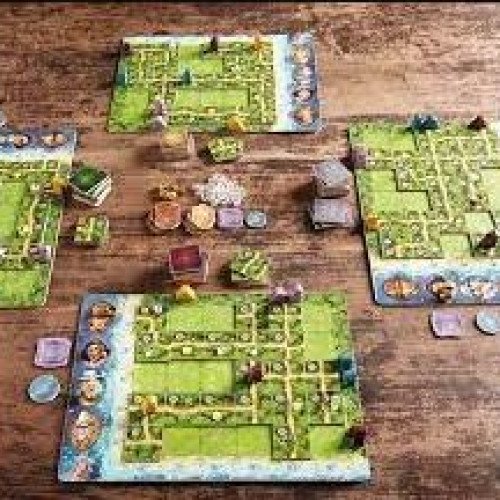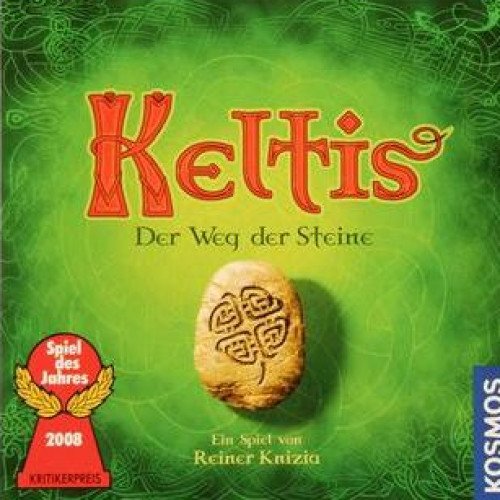"KARUBA" vs "KELTIS"

KARUBA
Karuba is a tile-laying race game for 2–4 players, designed by Rudiger Dorn and published by HABA in 2015. Each player has 4 explorers, which move through the jungle on the player's private board in order to discover treasure and reach hidden temples. The game was nominated for the 2016 Spiel Des Jahres award. In Karuba, a player randomly picks a numbered tile each turn. Tiles contain roads which touch two, three, or four edges of the tile, forming curves, straightaways, T-intersections, etc. Then all the players play the identical numbered tile on their own separate jungle boards. After a few turns, each player board looks unique with tiles configured in different places. Explorers can move along the roads created by the tiles when a player discards a tile instead of placing it on their board. Some tiles contain gold or gems when placed, and when an explorer stops on these tiles the player collects the treasure. The players race to have their explorers reach the temples before the other players, which are worth more points the fewer other players have reached the corresponding temple on their own board. The game ends when one player reaches all four temples or all 36 tiles have been used.
Statistics for this Xoptio

KELTIS
Keltis is a board game designed by Reiner Knizia that won the Spiel des Jahres for best game of the year in 2008. In the US, it has been marketed as Lost Cities: The Board Game, though there are some subtle rules differences. It is a multi-player board game that is based on the same theme as Knizia's two-player card game Lost Cities. Players score points by playing cards, which must be played in ascending or descending order. Each turn, a card is played which advances the player's token along a stone path. Playing only 1 to 3 cards in a color results in negative points for that color. Each card played improves a player's score, and when at least 4 cards of one color have been played, positive points are scored for that path. Each player records progress using tokens. One token is taller, and points it collects are doubled. Extra points are gained by collecting stones or landing on bonus squares during the game. The game ends either when five of the players' tokens have entered the "goal area" consisting of the last three ranks on the board, or when the deck runs out. At this point, the players' scores are tallied, and the player with the most points wins.